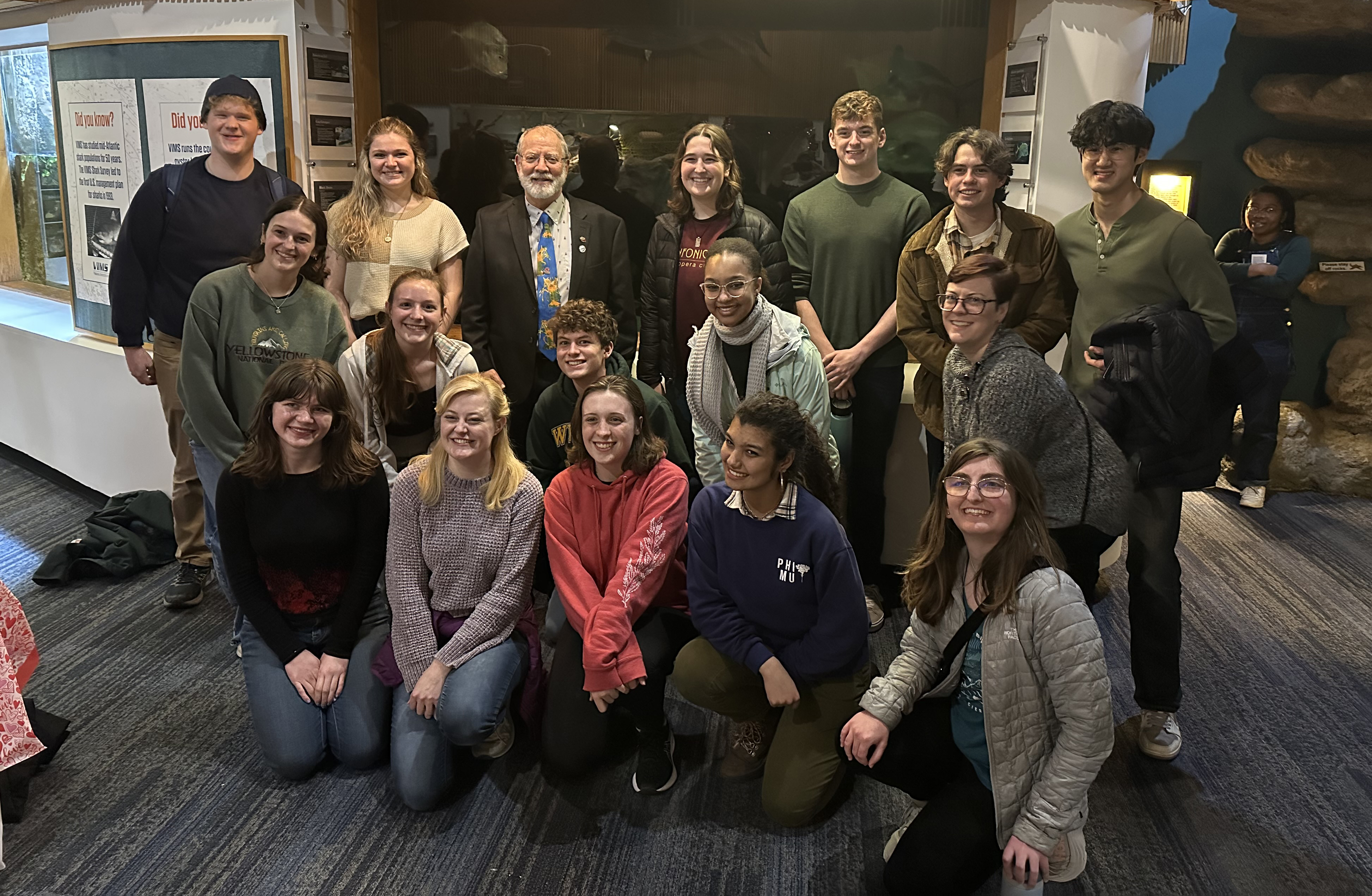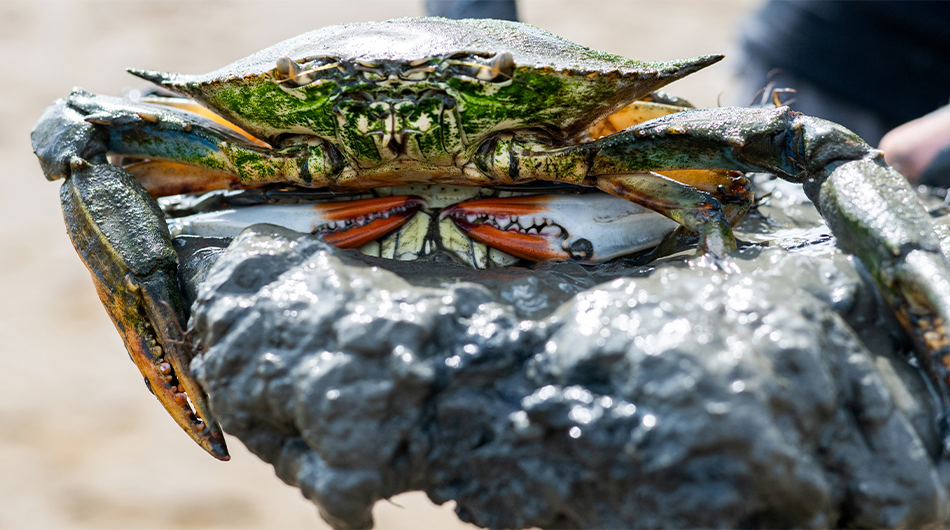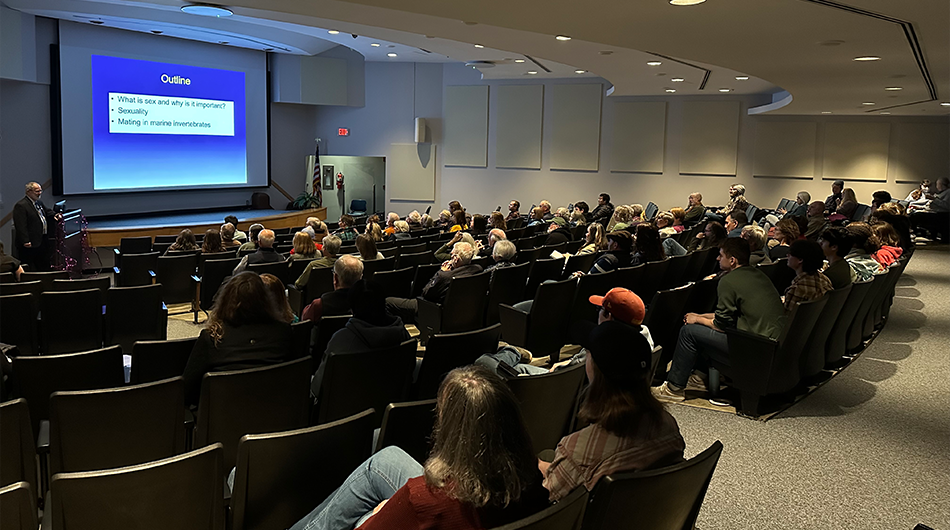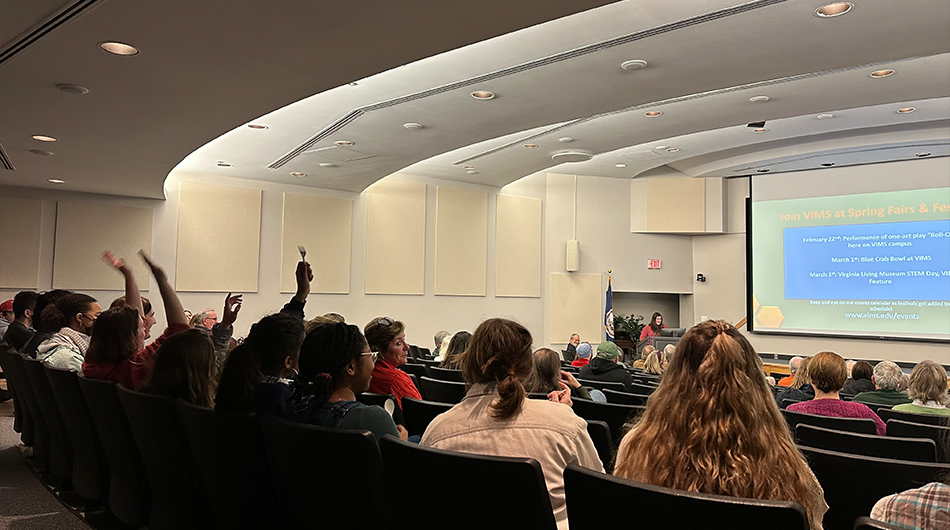After Hours lecture series makes coastal and marine sciences accessible to the public
“This was definitely the highlight of my week,” said undergraduate senior Sarah Herrera as she exited the recent Valentine’s Day-themed After Hours lecture, “Romance Beneath the Waves,” presented by William & Mary’s Batten School & VIMS Professor Jeff Shields. As Co-President of W&M’s Marine Science Society, Herrera brought along approximately 14 other students, she said, because “I know Dr. Shields is a fantastic lecturer and I really wanted people in the club who haven't taken his classes to be exposed to this.”
 Shields captivated a February 13th audience of 140 attendees with his trademark humor and a multitude of facts. From corals, oysters and barnacles to flatworms, octopuses and blue crabs, Shields revealed the intriguing and often bizarre ways marine creatures reproduce. “I really enjoy sharing my knowledge and anecdotal stories with people,” said Shields, “so they can see how interesting and complex marine life can be.”
Shields captivated a February 13th audience of 140 attendees with his trademark humor and a multitude of facts. From corals, oysters and barnacles to flatworms, octopuses and blue crabs, Shields revealed the intriguing and often bizarre ways marine creatures reproduce. “I really enjoy sharing my knowledge and anecdotal stories with people,” said Shields, “so they can see how interesting and complex marine life can be.”
The After Hours lecture series, hosted by the Batten School of Coastal & Marine Sciences & VIMS, is a free lecture series open to the public. “After Hours help to bridge the gap between scientific knowledge and public understanding,” said Kristen Sharpe, assistant director of outreach & engagement, “and they provide a platform for Batten School & VIMS researchers and advisory staff to highlight their cutting-edge work while exploring some of the pressing issues facing the Bay and our global ocean.”
Upcoming After Hours lectures
“This year’s line-up is particularly exciting,” said Sharpe, describing future events in the After Hours lecture series.
On March 20th, Rom Lipcius will present "Beautiful Swimmers: Blue Crabs in Chesapeake Bay," detailing the long-running Blue Crab Winter Dredge Survey. This research, conducted in partnership with the Maryland Department of Natural Resources, provides critical insights into blue crab populations and the impact of fisheries management in the Chesapeake Bay. Attendees will learn about the history of blue crab conservation efforts and what the future holds for the Bay’s most iconic crustacean.
Then, on April 24th, Angelina Dichiera will discuss how modern technology aids marine conservation in "Searching for Sturgeon." The lecture will explore the use of environmental DNA (eDNA), a breakthrough method for detecting endangered species by analyzing genetic material left behind in the water. Dichiera will explain how this technology is helping scientists monitor sturgeon populations in Bay tributaries, guiding conservation strategies for these ancient “living fossil” fish.
RSVP to “Searching for Sturgeon”
Finally, marine scientists Noah Tait and Renee Sanders will present "The National TRAP Program: Tackling Derelict Fishing Gear from Coast to Coast" on July 17th. This lecture will focus on efforts by the National Fishing Trap Removal, Assessment, & Prevention (TRAP) Program to remove abandoned fishing traps from coastal waters across the U.S. Funded by the National Oceanic and Atmospheric Administration’s Marine Debris Program, this work strives to mitigate the ecological and economic impacts of lost fishing gear. Attendees will learn about the environmental consequences of derelict traps and how recovery efforts are benefiting marine ecosystems and coastal community economies.
RSVP to “The National TRAP Program”
After Hours will continue throughout the summer and fall, as well, with fascinating topics and passionate presenters, making the lectures must-attend events for science enthusiasts. “Providing these learning opportunities,” said Sharpe, “can help increase public awareness about issues facing coastal and marine ecosystems and science for solutions that support the resiliency of coastal communities and sustainability of our ocean.”
Shields is also looking forward to his colleagues’ upcoming presentations. “Marine science is a microcosm of science at large. We have amazing expertise at VIMS and we all love sharing our science and findings. So, I certainly encourage people to come to our After Hours lectures to discover all manner of things that affect our local estuaries and greater marine world.
“Plus,” he joked, “these events make great date nights!”



